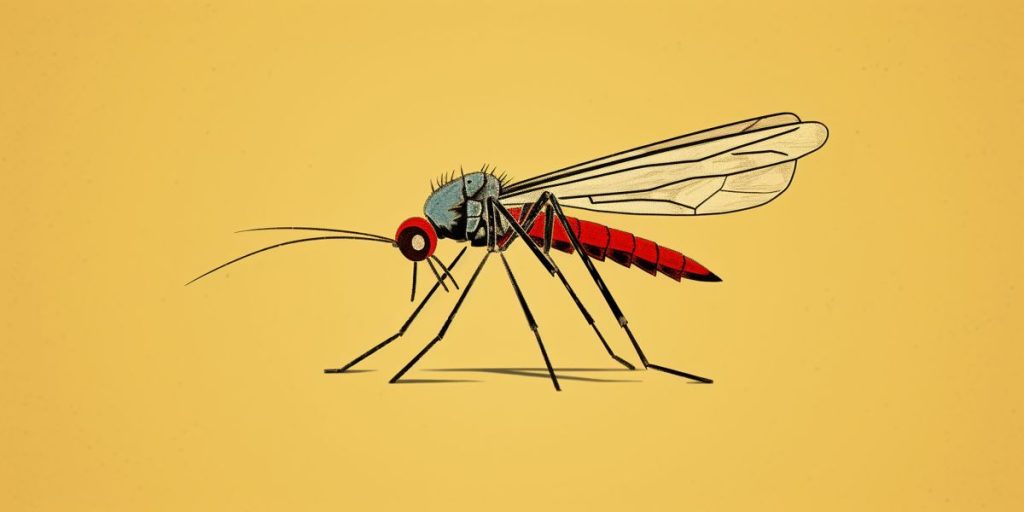Researchers in Cyprus have developed VEClim, an early warning system that uses weather forecast data to assess the risk of Asian tiger mosquito activity, known carriers of the dengue virus. This digital platform provides risk assessments and short-term predictions about mosquito activity, aiding in the control of mosquito-borne diseases.
What is the new early warning system for dengue-carrying mosquitoes?
Researchers in Cyprus have developed VEClim, an early warning system designed to assess the risk of Asian tiger mosquito activity, a carrier of the dengue virus. This digital platform uses weather forecast data to project mosquito activity, aiding in the control of mosquito-borne diseases by providing risk assessments and short-term activity predictions.
Innovations in Vector Control
Researchers at a prominent institute in Cyprus have taken a significant step in combating the threat of mosquito-borne diseases with the development of an early warning system. This new tool is designed to assess the risk level posed by the Asian tiger mosquito, a known carrier of the dengue virus. The system is part of a digital platform that projects the mosquito’s activity throughout the year in the region.
These mosquitoes have been a growing concern across Europe, with their presence and the diseases they carry affecting numerous countries. The recent documentation of the species in Limassol has heightened the focus on monitoring and control efforts.
Vector Control Measures and Public Health
In response to the potential threat, the local health department has initiated aggressive control measures. These measures have targeted areas where the mosquito population is likely to establish, given that even isolated cases of dengue fever can pose significant public health challenges. Fortunately, current reports indicate that the incidence of locally transmitted cases remains low, largely involving travelers who have contracted the virus abroad.
The institute’s online platform, VEClim, plays a crucial role in analyzing risk and potential impact. Utilizing data from the European Centre for Medium-Range Weather Forecasts, the platform provides valuable forecasts. These forecasts are particularly focused on the winter months when the likelihood of an outbreak is lowest.
Climate and Environmental Impact on Mosquito Populations
The activity of the Asian tiger mosquito is heavily influenced by climate and environmental conditions. Temperature fluctuations, rainfall patterns, and human behavior, such as the improper disposal of containers that can collect water, all play a part in shaping the mosquito’s ability to proliferate and spread viruses.
VEClim’s contribution extends beyond risk assessments. It offers insights into the mosquito’s seasonal activity and generates short-term predictions about their abundance and activity levels. Looking ahead, the system is set to expand its capabilities to include long-term climate change projections and more targeted region-specific information for vector control.
Future Prospects and Expansion of VEClim
The platform aims to incorporate additional vector species into its assessments. This will allow for more comprehensive monitoring and response strategies that encompass other disease-carrying insects like sand flies, yellow fever mosquitoes, and common house mosquitoes. These species are associated with other serious illnesses, including leishmaniasis and the West Nile virus, underscoring the necessity of such advanced monitoring systems in public health planning and response initiatives.
VEClim stands as a testament to the power of technology and data in enhancing our ability to predict and prevent the spread of vector-borne diseases. It represents a proactive approach to public health that prioritizes early detection and thorough risk assessment in the fight against these pervasive threats.
What is the new early warning system for dengue-carrying mosquitoes?
Researchers in Cyprus have developed VEClim, an early warning system designed to assess the risk of Asian tiger mosquito activity, a carrier of the dengue virus. This digital platform uses weather forecast data to project mosquito activity, aiding in the control of mosquito-borne diseases by providing risk assessments and short-term activity predictions.
How does VEClim contribute to vector control measures and public health?
VEClim plays a crucial role in analyzing risk and potential impact. It utilizes data from the European Centre for Medium-Range Weather Forecasts to provide valuable forecasts about mosquito activity. By identifying areas where the mosquito population is likely to establish, VEClim helps in implementing targeted control measures. This proactive approach is important as even isolated cases of dengue fever can pose significant public health challenges.
What factors influence the activity of Asian tiger mosquitoes?
The activity of the Asian tiger mosquito is heavily influenced by climate and environmental conditions. Temperature fluctuations, rainfall patterns, and human behavior, such as improper disposal of containers that can collect water, all play a part in shaping the mosquito’s ability to proliferate and spread viruses. VEClim takes into account these factors to provide insights into the mosquito’s seasonal activity and generate short-term predictions about their abundance and activity levels.
What are the future prospects and expansion plans for VEClim?
VEClim aims to expand its capabilities by incorporating additional vector species into its assessments. This will allow for more comprehensive monitoring and response strategies that encompass other disease-carrying insects like sand flies, yellow fever mosquitoes, and common house mosquitoes. The platform also plans to include long-term climate change projections and more targeted region-specific information for vector control. This expansion is crucial in public health planning and response initiatives to combat other serious illnesses associated with these species.

